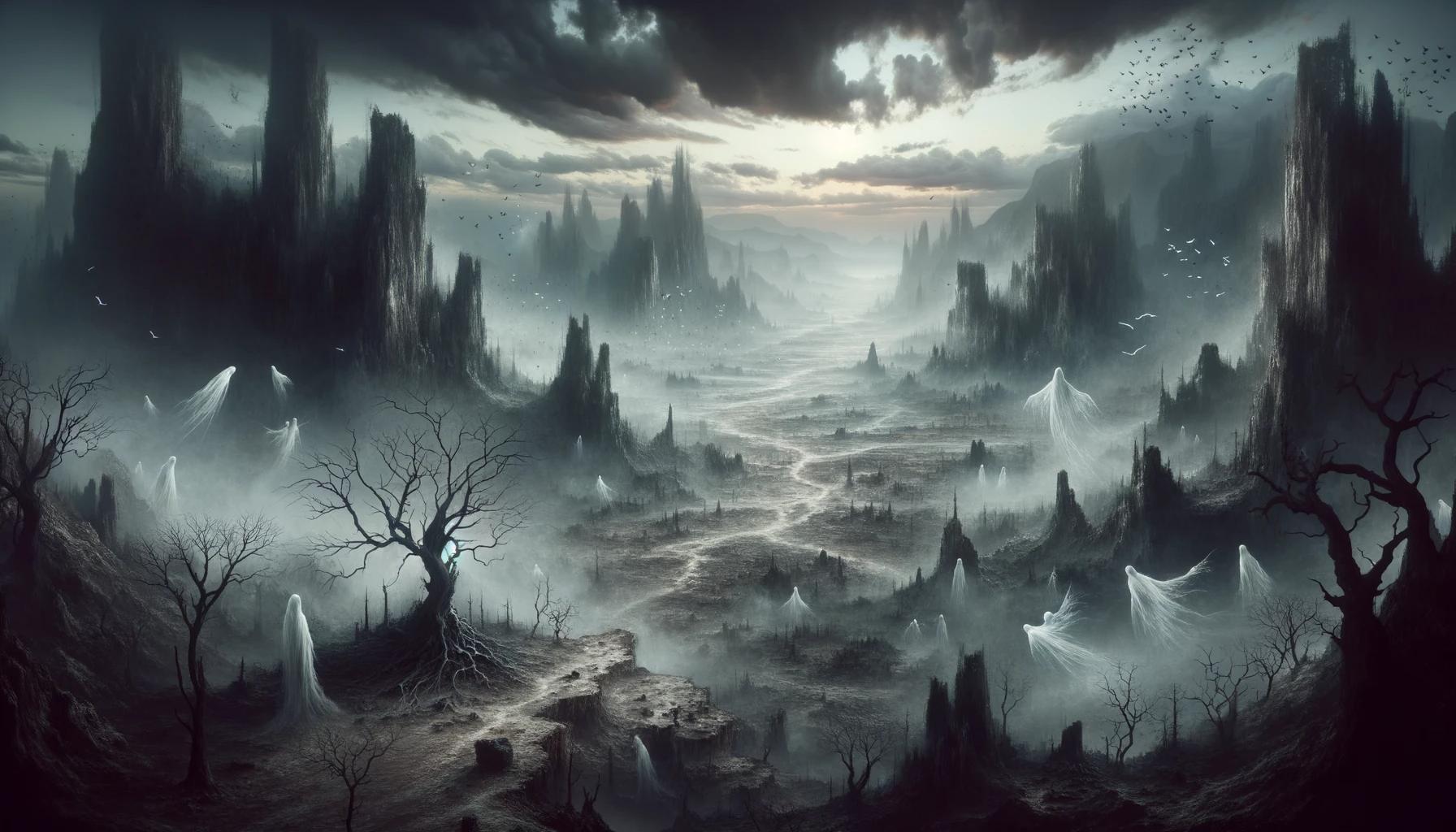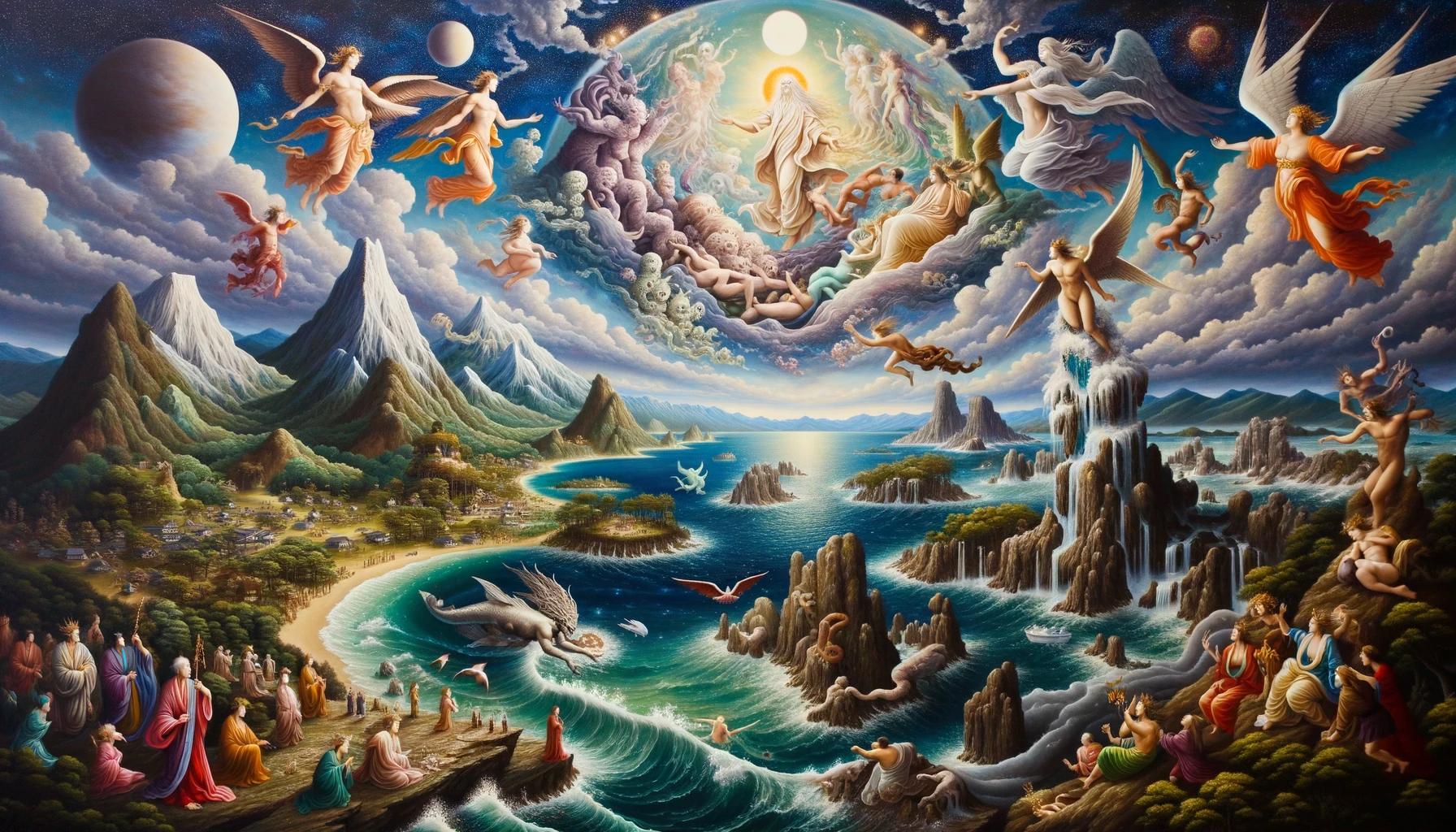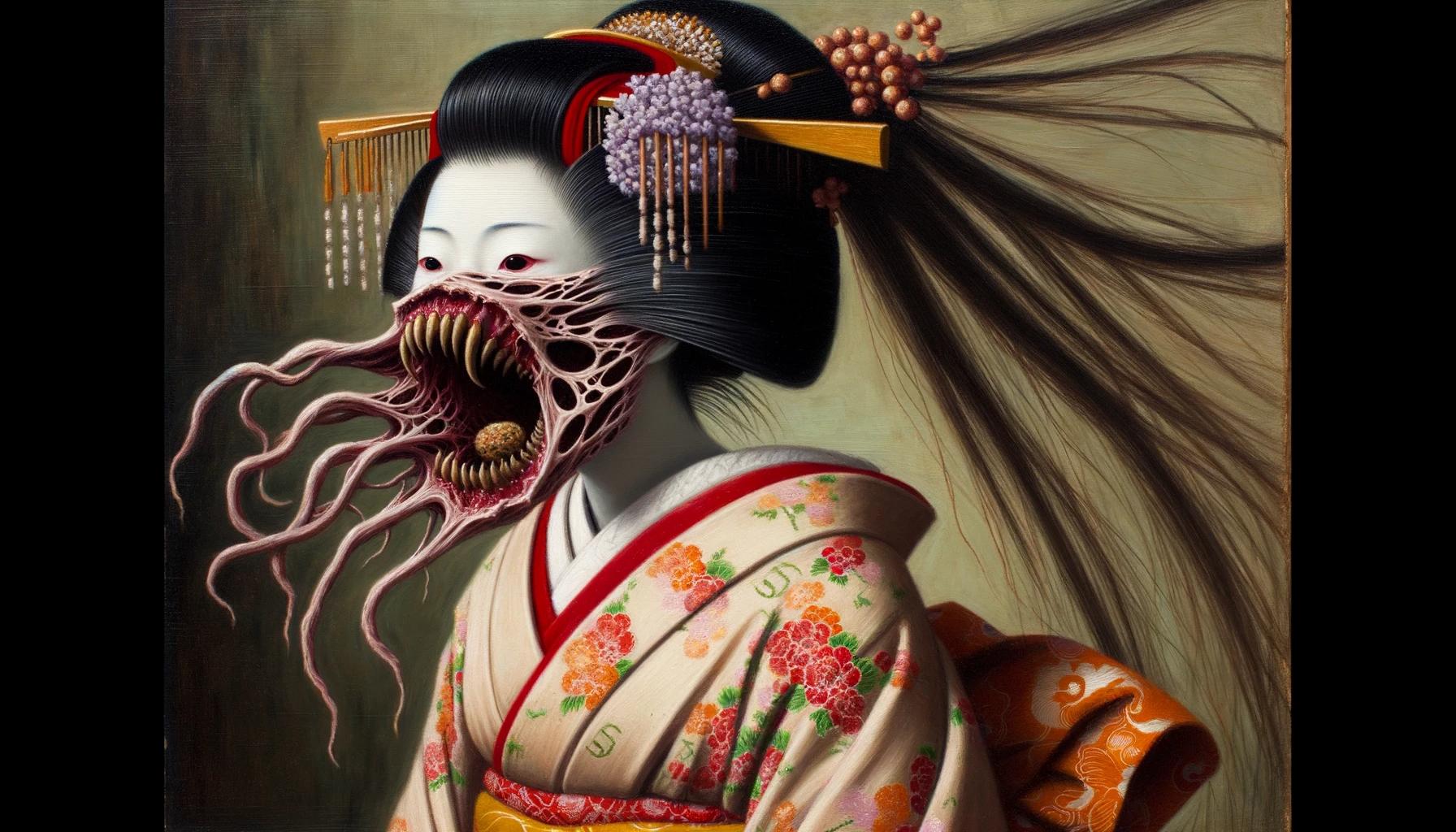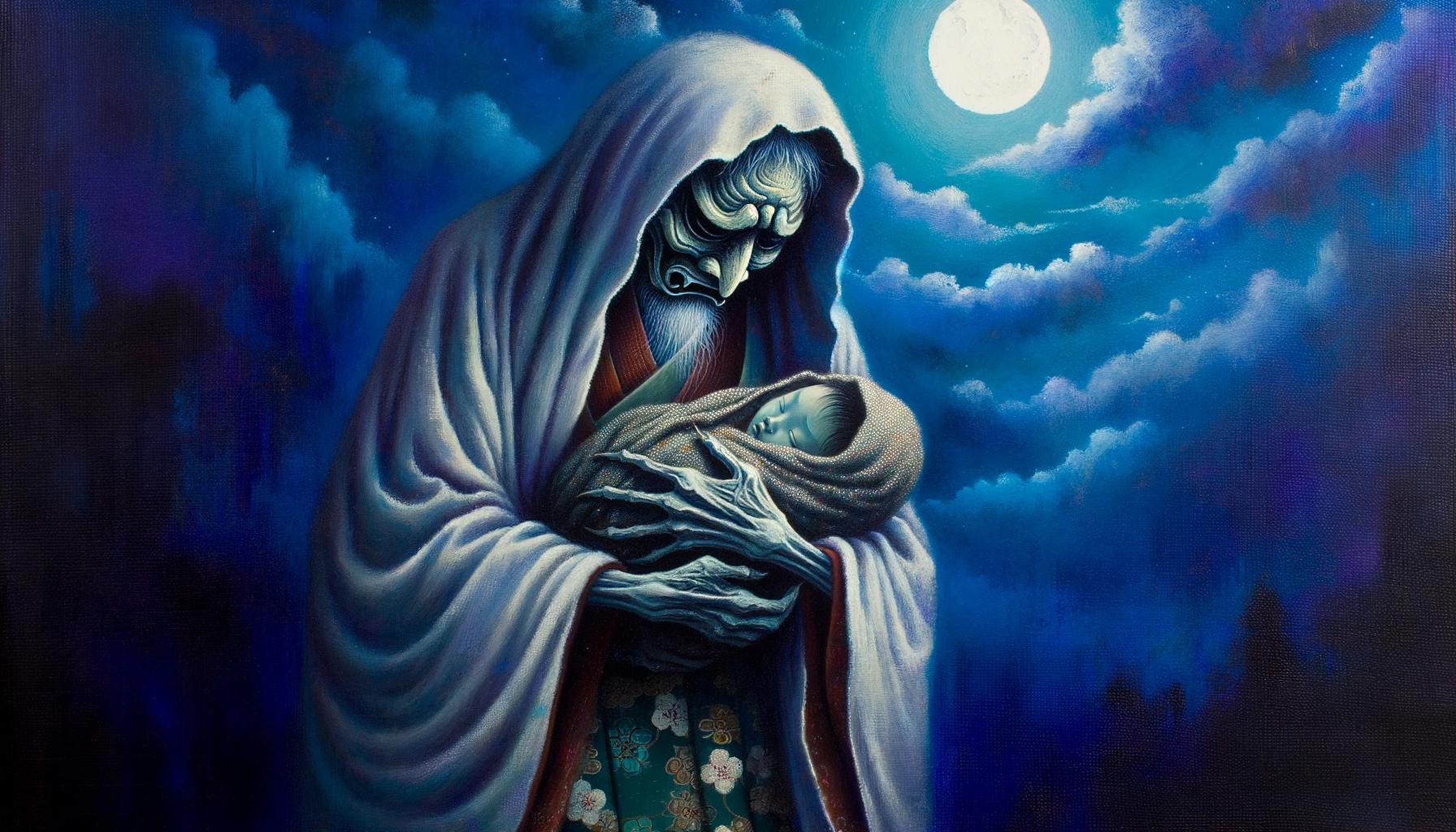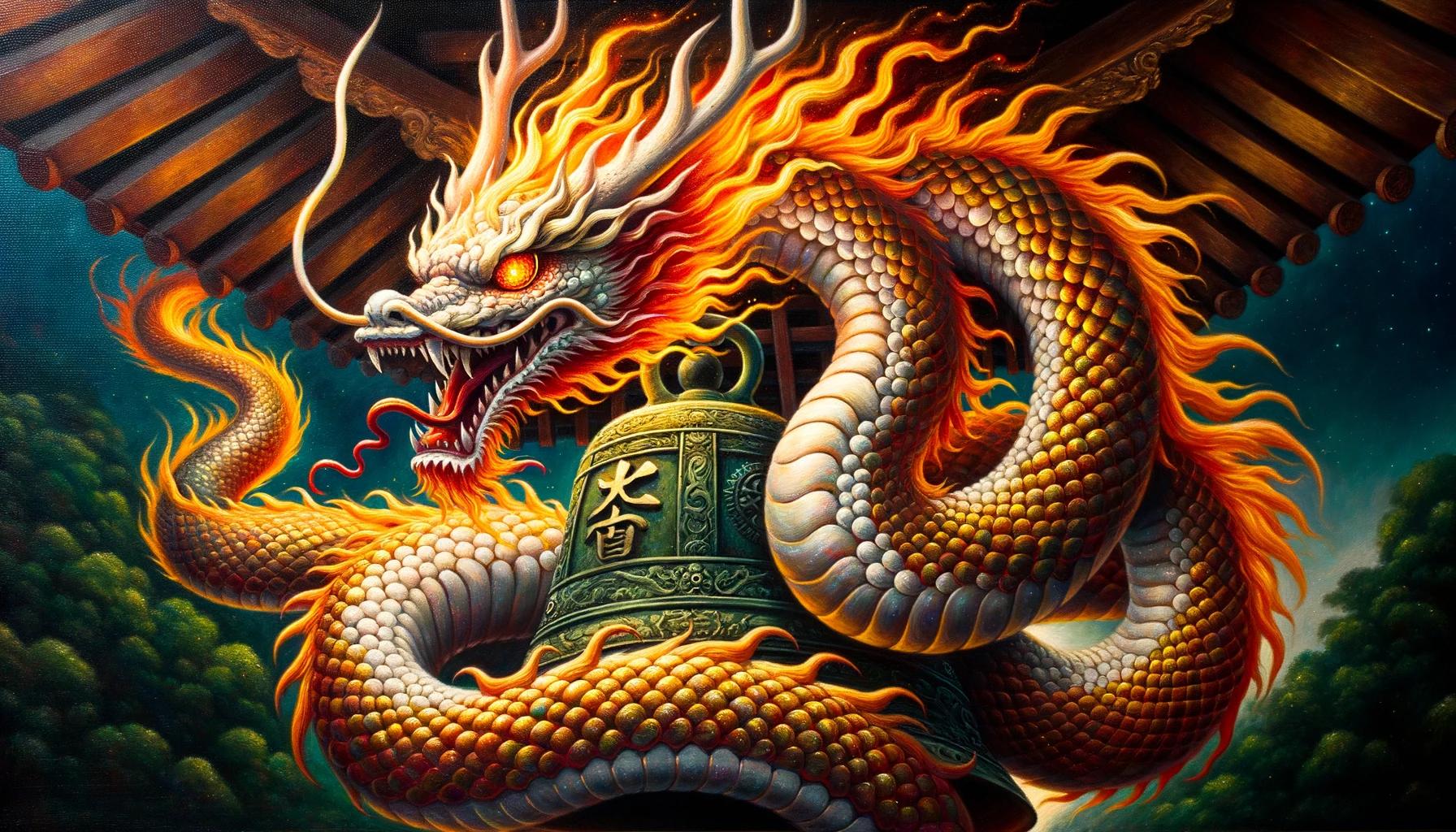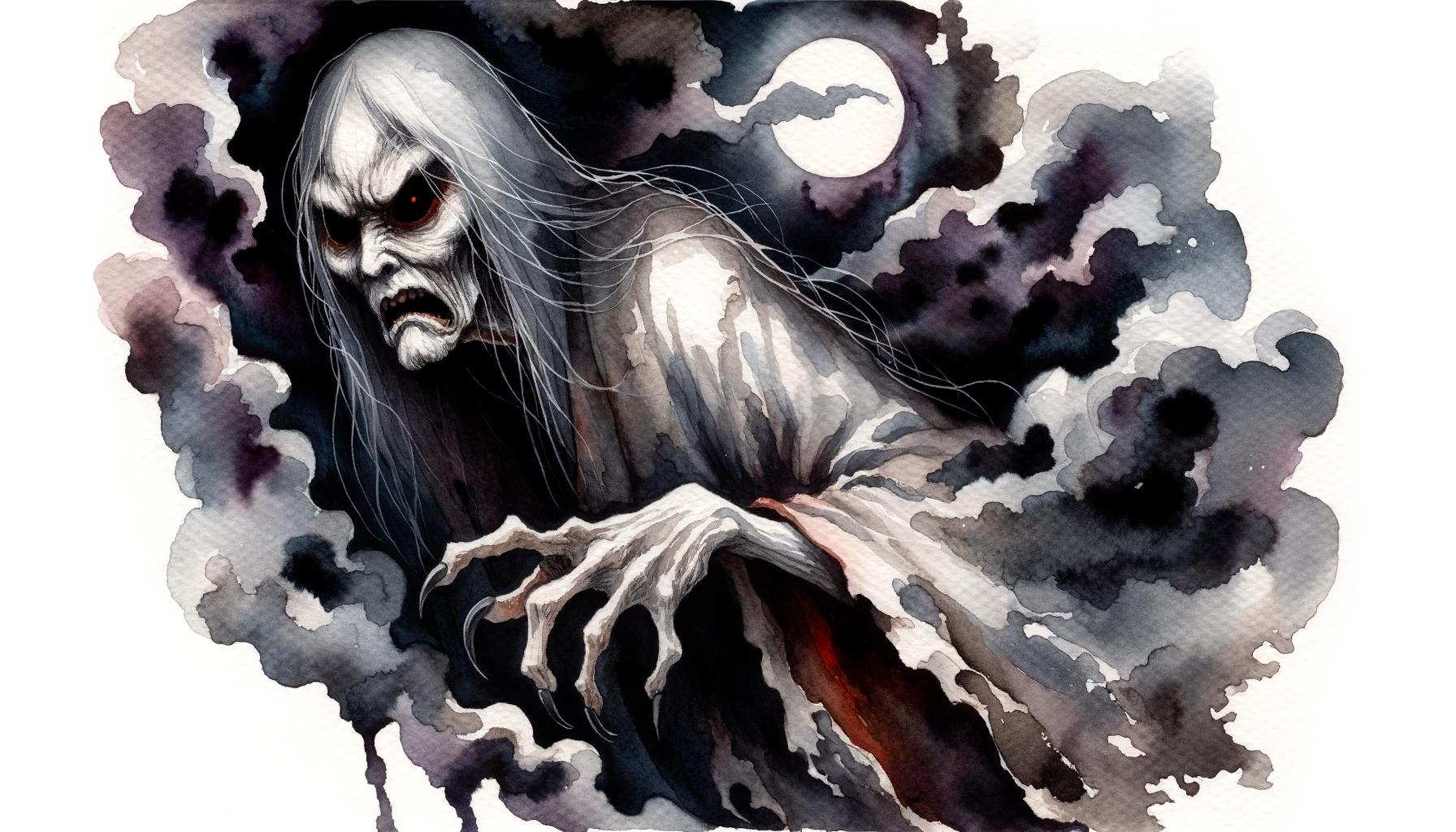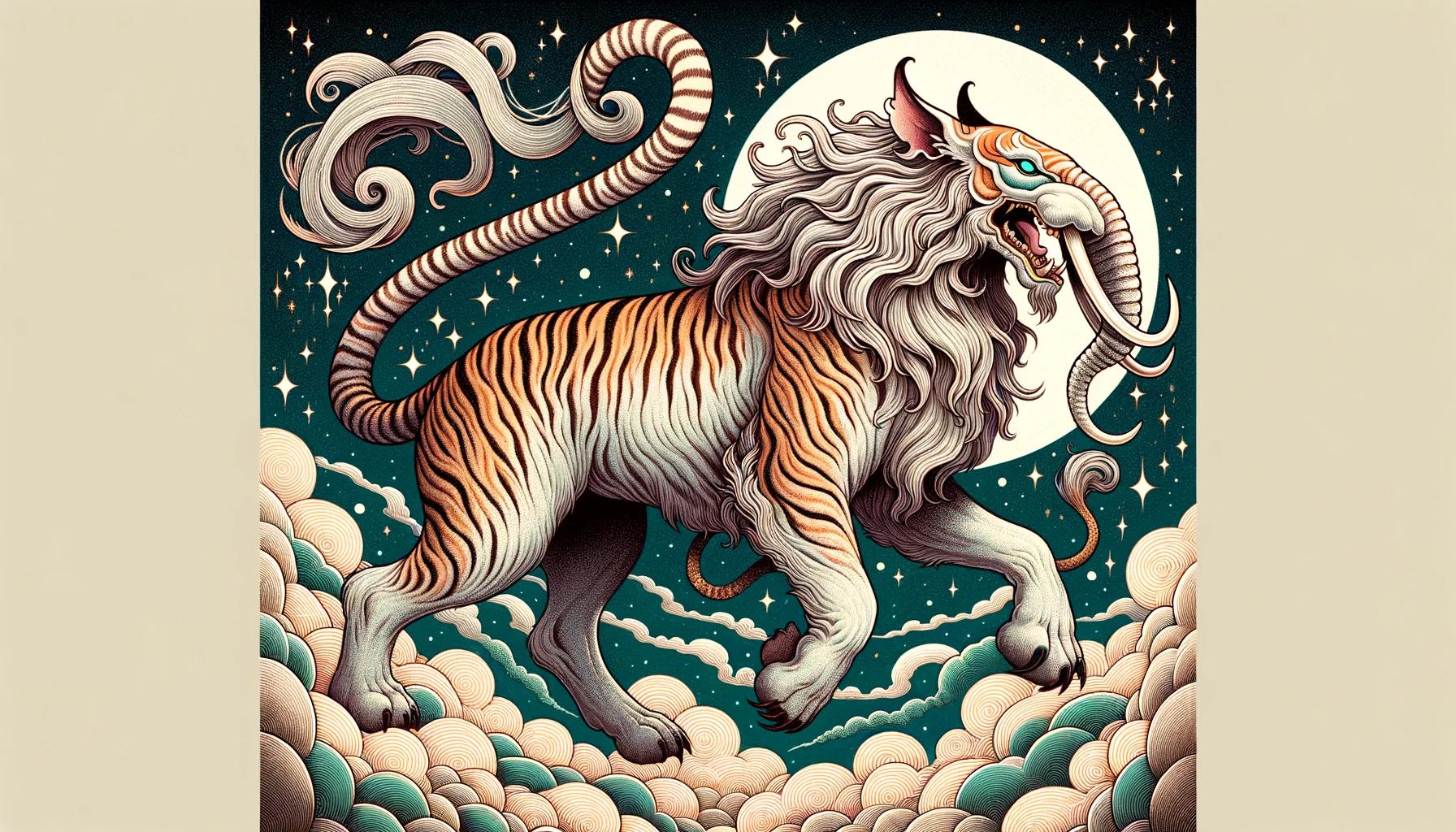Akuma: The Raging Demon of Japanese Folklore
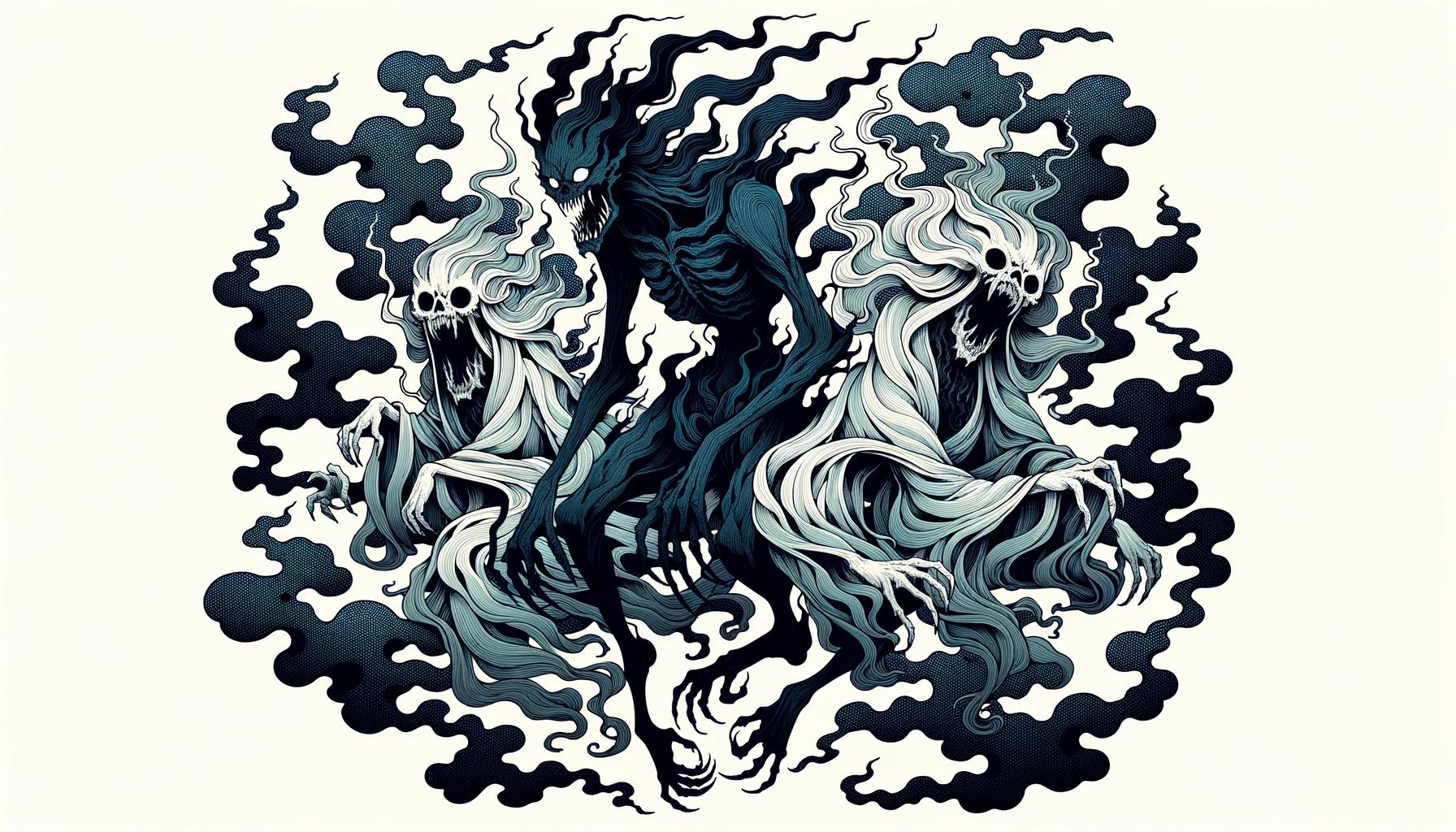
Akuma, in Japanese mythology, refers to malicious fire spirits that bring afflictions to humans. Often described as a category of ill-defined beings, they are commonly translated as devils or demons.
Originating during Japan’s Heian period, Akuma gained popularity and recognition in Buddhist texts. Known for their ability to fly and wield swords, they are considered omens of misfortune. This article provides an overview of Akuma’s significance in Japanese folklore, exploring their role in religious beliefs, representations in popular culture, linguistic insights, and connections to specific locations and rituals.
Explore the intriguing world of Akuma mythology and its cultural relevance in Japan.
Understanding the Concept of Demons in Japanese Culture
In Japanese culture, the concept of demons holds a significant place, representing otherworldly beings with both terrifying and intriguing qualities. These demons, known as Akuma, are a manifestation of malevolence and chaos.
Unlike Western interpretations of demons, which are often associated with Christian theology, Akuma have their own unique characteristics deeply rooted in Japanese mythology and folklore.
Akuma are considered as spirits of fire, bringing afflictions and misfortune to humans who encounter them.
They are described as a distinct category of undefined beings that cause problems and calamities. The term “Akuma” is commonly translated as “devil” or “demon” in English, evoking a sense of fear and malevolence.
These malevolent beings are often associated with supernatural abilities, such as the ability to fly and wield swords. They serve as omens of bad luck and are believed to bring despair to those who cross their path.
This belief has resulted in their portrayal in various literary works, video games, and other forms of popular culture, where they continue to captivate audiences with their terrifying presence.
To truly understand the concept of Akuma in Japanese culture, it is essential to explore their origins, mythological significance, religious connotations, and associations with specific rituals and locations.
By delving into the complex world of Akuma, we gain insights into the intricate layers of Japanese mythology and the fascinating cultural beliefs surrounding these malevolent spirits.
Mythological Origins of Akuma: The Heian Period and Beyond
Akuma, the malevolent spirits of Japanese mythology, trace their roots back to the Heian period, a significant era in Japan’s history.
During this time, the concept of Akuma began to take shape and gain prominence in Buddhist texts. These ancient texts depicted Akuma as elusive beings associated with fire, capable of causing afflictions and misfortune to humans.
As the Heian period progressed, Akuma evolved beyond their initial descriptions and became ingrained in Japanese folklore. They were recognized as a diverse category of malevolent entities, causing trouble and bringing despair wherever they appeared.
This expansion of the Akuma concept paralleled Japan’s growing cultural and religious landscape.
With their ability to fly and wield swords, the Akuma were often viewed as harbingers of ill luck.
Today, the Akuma continue to captivate imaginations and appear in various forms of Japanese literature, including novels by notable authors like Kazai Zenzo and Akutagawa Ryunosuke.
Moreover, their presence has extended into popular culture, as seen in video games such as Street Fighter and television series like Miraculous.
Exploring the mythological origins of Akuma illuminates the cultural significance of these malevolent spirits in Japanese society.
Their evolution from Buddhist texts to their portrayal in contemporary media showcases the enduring impact of these ancient creatures.
Differences Between Akuma and Other Japanese Folklore Creatures
Akuma, as a malevolent fire spirit in Japanese mythology, possesses distinct characteristics that set it apart from other creatures in Japanese folklore. While Akuma shares similarities with popular creatures like Kitsune, Tengu, and Oni, there are key differences that distinguish it.
Unlike Kitsune, which is a fox spirit known for its shapeshifting abilities, Akuma is specifically associated with fire and brings afflictions to humans. Tengu, on the other hand, are supernatural beings often depicted with crow-like features and known for their martial arts skills, whereas Akuma is described as a spirit of fire, capable of flight and carrying a sword.
Another notable contrast lies in the nature of Oni and Akuma. While both are often referred to as demons, Oni are usually portrayed as brute and powerful creatures associated with evil and chaos, while Akuma is depicted as a malicious spirit that brings misfortune through wildfires and other calamities.
These distinctions highlight the unique characteristics of Akuma in Japanese folklore, emphasizing its role as a malevolent fire spirit associated with bringing afflictions and misfortune to humans.
Exploring the Akuma in Buddhist and Shinto Beliefs
In Japanese mythology, the Akuma holds a significant place in both Buddhist and Shinto beliefs.
Within Buddhism, Akuma is seen as a malevolent being, often associated with negative karma and suffering. They are often portrayed as tempters who seek to lead humans astray from the path of enlightenment.
In Shintoism, the Akuma is considered a disruptive force, bringing about misfortune and chaos. They are believed to be the cause of various afflictions and troubles in human life. Shinto rituals and practices involve the appeasement and purification of these malevolent spirits to restore balance and harmony.
Both Buddhist and Shinto traditions emphasize the importance of spiritual purity and protection against the influence of Akuma. Rituals, prayers, and charms are performed to ward off their negative energies and ensure the well-being of individuals and communities.
It is worth noting that while Buddhism and Shintoism share certain concepts and practices, their perspectives on Akuma may differ in specific details and symbolism. Despite this, the presence of Akuma in both traditions highlights their enduring relevance in Japanese spirituality.
Role of Akuma in Japanese Buddhism Mythology
Akuma, the malevolent spirits of Japanese mythology, hold a significant role in the realm of Buddhism. In Japanese Buddhism, Akuma are often seen as embodiments of negative karma and spiritual afflictions.
They symbolize the inner demons that individuals must overcome in their quest for enlightenment.
Within Buddhist teachings, Akuma serve as reminders of the impermanence and suffering inherent in worldly existence. They are believed to arise from the unwholesome actions and attachments of sentient beings.
However, Akuma also present an opportunity for spiritual growth and transformation.
In Buddhist rituals and practices, invoking the name of the Akuma is meant to bring awareness to the human predicament and the importance of seeking liberation from suffering.
By acknowledging the presence of these malevolent spirits, individuals are encouraged to cultivate positive qualities such as compassion, wisdom, and discipline.
Moreover, the concept of Akuma acts as a metaphorical representation of inner obstacles and hindrances on the path to enlightenment.
Overcoming these obstacles requires deep introspection, moral development, and spiritual purification.
In essence, the role of Akuma in Japanese Buddhism mythology is to serve as powerful symbols of the human condition, reminding practitioners of the need to transcend their negative inclinations and cultivate a more enlightened state of being.
Through dedicated practice and spiritual discipline, individuals strive to conquer their own inner demons and attain liberation from suffering.
- Akuma embody negative karma and spiritual afflictions in Japanese Buddhism
- They represent inner demons that individuals must overcome
- Akuma symbolize impermanence and suffering in worldly existence
- Invoking the name of Akuma raises awareness of the human predicament
- Overcoming Akuma requires cultivation of compassion, wisdom, and discipline
- Akuma serve as metaphors for inner obstacles on the path to enlightenment
- Practitioners strive to conquer their inner demons through spiritual discipline
Impact of Akuma in Japanese Christianity
While Akuma are primarily associated with Buddhism and Shintoism, their presence in Japanese Christianity is worth exploring.
In this unique context, Akuma are often perceived as malevolent beings that challenge Christian beliefs and values. Adherents often see Akuma as manifestations of evil and temptation, tempting believers away from their faith.
Japanese Christian communities have developed an understanding of Akuma as forces that must be resisted and conquered through the power of God. They view Akuma as deceptive spirits, seeking to lead people astray and disrupt their spiritual journey.
Consequently, Christians in Japan engage in prayer, scripture study, and fellowship to strengthen their faith and protect themselves from the influence of Akuma.
As Akuma are deeply rooted in Japanese culture, their presence in Japanese Christianity reflects the unique blend of religious traditions.
The impact of Akuma on the faith of Japanese Christians serves as a testament to the resilience and adaptability of Christianity in Japan, as believers navigate the complexities of their cultural and religious heritage.
Representation of Akuma in Popular Culture and Media
Akuma, the malevolent spirits of Japanese mythology, have made a strong impact on popular culture and various forms of media in recent years. From literature to video games, these demonic beings have fascinated audiences around the world.
In literature, Akuma have been featured in an array of Japanese novels, such as Kazai Zenzo’s “Akuma,” Akutagawa Ryunosuke’s “The Devil’s Tobacco,” and Tamura Taijiro’s “The Demon of the Flesh.” These literary works explore the dark and mysterious nature of Akuma, adding a thrilling element to the stories.
In the realm of video games, Akuma has become an iconic character in Street Fighter, known as Gouki in Japan. With his powerful moves and menacing presence, Akuma has become a favorite among gamers and has left a lasting imprint on the fighting game genre.
Furthermore, Akuma has made an appearance in the popular animated series Miraculous as a creature resembling a moth. In this adaptation, Akuma has the ability to grant powers to individuals through negative emotions, adding a unique twist to the concept of these malevolent spirits.
Overall, the representation of Akuma in popular culture and media has brought their mythology to a wider audience. Whether it be through literature, video games, or television, Akuma continue to captivate and intrigue people with their dark and foreboding presence.
How to Say ‘Demon’ in Japanese: Linguistic Insights
When exploring the world of Akuma in Japanese mythology, it’s essential to understand the linguistic aspects associated with these malevolent spirits. In the Japanese language, the word for ‘demon’ is akuma (悪魔).
This term encompasses the essence of these supernatural beings and their wicked nature. The characters that make up akuma translate to ‘evil’ or ‘bad’ (悪) and ‘demon’ or ‘spirit’ (魔).
It’s interesting to note that the concept of ‘demon’ is not limited to the singular form in Japanese. The plural form of akuma is akumatachi, indicating multiple demons. This linguistic distinction reflects the notion that demons are not isolated individuals but rather part of a broader category of malevolent entities.
Furthermore, the Japanese language offers various other terms related to different types of demons. For instance, oni (鬼) refers to a specific category of demons that are often depicted with horns and a fierce appearance.
Additionally, yokai (妖怪) embodies a range of supernatural creatures, including both benevolent and malevolent entities.
Understanding the linguistic nuances behind the term ‘demon’ in Japanese allows us to delve deeper into the cultural significance of Akuma in Japanese mythology. It provides insight into the portrayal, symbolism, and broader context surrounding these malevolent spirits throughout Japanese folklore and tradition.
Uncovering the Symbolism and Meanings Behind Akuma
Akuma, the malevolent spirits of Japanese mythology, hold significant symbolism and meanings within Japanese culture. They are often associated with fire and destruction, representing the inherent duality of existence. The presence of Akuma serves as a reminder of the potential darkness and chaos that exists alongside light and harmony.
Symbolically, Akuma embody the challenges and obstacles that individuals face in their lives. They represent the negative aspects of human nature, such as anger, greed, and temptation. By confronting these demonic forces, individuals can gain insight into their own inner struggles and find ways to overcome them.
Akuma also symbolize the consequences of one’s actions. They are often depicted as bringers of misfortune and despair, highlighting the importance of moral choices and ethical behavior. The stories surrounding Akuma serve as cautionary tales, reminding individuals of the potential consequences of indulging in darkness and immorality.
Furthermore, Akuma can be seen as manifestations of suppressed emotions and desires. They embody the hidden fears and regrets that reside within the human psyche. By acknowledging and confronting these suppressed aspects, individuals can attain personal growth and spiritual enlightenment.
In Japanese mythology, Akuma are multifaceted beings that carry rich symbolic meaning. They reflect the complexities of the human experience and encourage introspection, moral choices, and personal growth. Exploring the symbolism and meanings behind Akuma allows for a deeper understanding of Japanese folklore and its impact on individuals’ lives.
Famous
Akuma Figures and their Stories in Japanese Mythology
Japanese mythology is rich with captivating stories featuring famous Akuma figures. These malevolent spirits have left a lasting impact on the cultural tapestry of Japan. Let’s delve into some intriguing legends surrounding these Akuma figures:
- Shuten-doji: This notorious Akuma was the leader of a group of bandit demons known as the Oni. Shuten-doji resided in Mount Oe and was known for his drinking and debauchery.
He terrorized the villagers until he was finally defeated by the legendary warrior Minamoto no Yorimitsu.
- Tamamo-no-Mae: Tamamo-no-Mae was a nine-tailed fox spirit who took the form of a beautiful woman to seduce and manipulate men.
According to legends, her ultimate goal was to bring downfall to the imperial family. She was eventually exposed and defeated by Abe no Yasuna.
- Amanozako: Amanozako was a fearsome Akuma who had immense supernatural powers.
She was believed to possess the ability to cause illness, suffering, and disasters. Amanozako was a formidable adversary who posed a significant threat to humanity.
These are just a few examples of the countless Akuma figures and their captivating stories in Japanese mythology.
Each one carries its unique traits, motivations, and consequences for those who encounter them. Exploring these tales provides insights into the complex world of Japanese folklore and the eternal struggle between good and evil.
Festivals and Rites Associated with Akuma in Japanese Tradition
Japanese culture is rich in vibrant festivals and rituals, many of which have deep-rooted connections to mythology and folklore. When it comes to the Akuma in Japanese tradition, there are several festivals and rites that hold significance.
One such festival is the Bon Festival, a time when ancestral spirits are believed to return to the earthly realm. During this festival, people honor their ancestors by performing traditional dances, decorating ancestral graves, and lighting lanterns.
It is believed that performing these rituals helps guide the spirits and protect them from malevolent forces, including the Akuma.
Another notable event is Setsubun, a festival celebrated on the eve of spring.
As part of the ritual, people throw roasted soybeans to drive away evil spirits and bring good fortune for the coming year. The concept of driving away evil aligns with the idea of protecting oneself from the influence of Akuma.
These festivals and rituals are not only vibrant celebrations of Japanese culture but also serve as a way to ward off negative energies and protect against the malevolent influences of the Akuma.
They demonstrate the deeply woven connections between mythology, folklore, and the everyday lives of the Japanese people.
Akuma Folklore in Specific Locations and Landmarks
Akuma, the malevolent spirits of Japanese mythology, have deep-rooted connections to various specific locations and landmarks in Japan. These places hold significant cultural and religious importance in relation to the folklore surrounding Akuma.
- Mount Hiei: Situated near Kyoto, Mount Hiei holds immense spiritual significance and is closely associated with Akuma. It is believed to be a place where powerful Akuma spirits reside, and it has been a subject of intrigue and reverence in Japanese mythology.
- Ryūgū-jō: Known as the “Dragon Palace,” Ryūgū-jō is a mythical underwater palace where the dragon deity resides.
Akuma are said to be attracted to this enchanting location, lending it an air of mysteriousness and danger.
- Takamagahara: Translating to “High Plain of Heaven,” Takamagahara is a sacred realm in Japanese mythology.
It is believed to be the dwelling place of deities and celestial beings, including Akuma who manifest in this divine realm.
- Jigoku: Often referred to as “Hell,” Jigoku is a realm associated with punishment and torment.
Akuma are said to originate from this realm, reinforcing their malevolent nature and association with infernal places.
These locations, among others, are intertwined with the mythological narratives that surround Akuma in Japanese folklore.
Exploring these specific places provides a glimpse into the rich cultural tapestry and religious beliefs of Japan, highlighting the deep-rooted connections between the spiritual realm and the physical landscape.
Significance of Sacred Objects in Akuma Mythology
In Akuma mythology, various sacred objects hold significant importance in the context of their existence and power.
These objects play a crucial role in the narratives surrounding Akuma and provide insights into their symbolism and cultural significance.
- Amenonuhoko: This sacred object represents the heavenly spear used by the gods in Japanese mythology.
It is said to be a divine tool with the power to shape the world.
- Kusanagi: Also known as the “Grass-Cutting Sword,” Kusanagi is one of the Three Sacred Treasures of Japan.
It is associated with the legendary hero Yamato Takeru and is believed to possess great spiritual energy.
- Tonbogiri: This legendary spear is said to have been wielded by the mythical warrior Honda Tadakatsu.
It is considered a powerful weapon that can defeat evil forces.
- Three Sacred Treasures: Consisting of Kusanagi, the Yata no Kagami (a mirror), and the Yasakani no Magatama (a jewel), these treasures are central to the Imperial Regalia of Japan.
They symbolize the divine authority of the Japanese emperor.
These sacred objects not only enhance the mythological narratives surrounding Akuma but also provide deeper insights into the cultural and religious beliefs of Japan.
They serve as powerful symbols of strength, protection, and spiritual connection to the divine realms.
.
.











